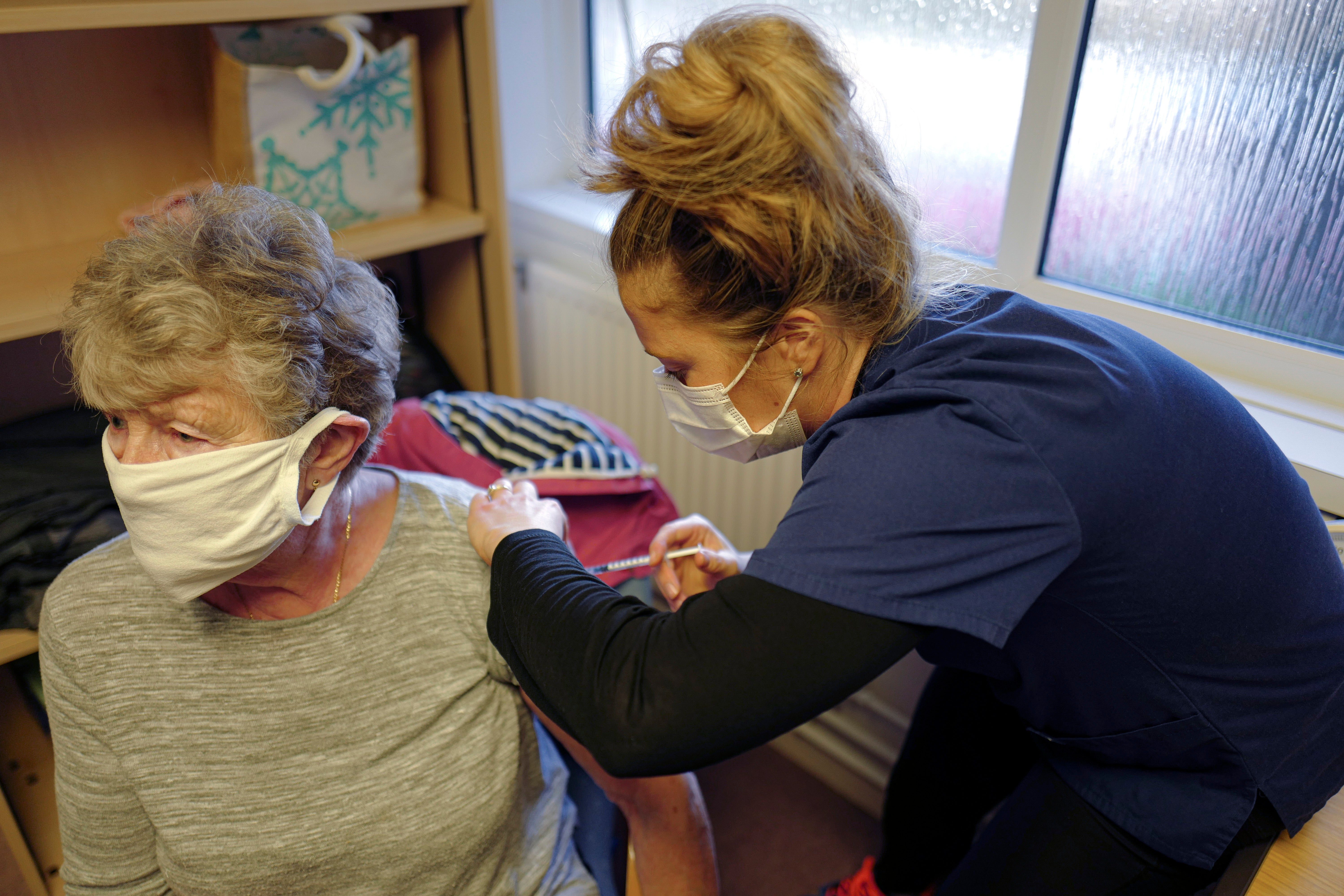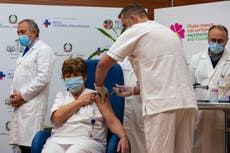The long-awaited Oxford vaccine brings light amid one of darkest periods of the pandemic
Analysis: Approval of the jab comes at a time when the four nations of the UK have been plunged into some of the deepest depths of the Covid crisis

Set against the backdrop of a nationwide escalation in cases and hospitalisations, the approval of the Oxford vaccine offers new hope for the UK.
It is a moment that ministers, experts and the public have long been waiting for – and comes at a time when the four nations have been plunged to some of the darkest depths of the pandemic.
Significantly, the government’s experts have taken the bold step of recommending the administration of two doses of the vaccine 12 weeks apart, rather than four.
This will allow authorities to get the vaccine out to as many people as possible throughout January – instead of reserving early supplies for the follow-up booster jab – and build up some form of protection in pockets of the population.
It’s a move borne out of urgency and necessity, with a new variant reaping havoc across the country, and AstraZeneca officials have insisted that such an approach will still induce high levels of immunity similar to those triggered by the Pfizer-BioNTech and Moderna vaccines.
Little over two weeks have passed since the government first announced that a new variant of Sars-CoV-2 had been detected, with its origins thought to be rooted in the southeast of England.
Since then, it has spread far and wide, accounting for the vast majority of new infections in England, while fuelling a huge surge that has placed an already stretched NHS under greater strain.
London Ambulance Service received as many emergency calls on Boxing Day as it did at the height of the first wave. Patients are now being treated in ambulance bays upon arrival at hospitals. And daily deaths from Covid are returning to the levels seen in April.
Authorisation of the Oxford vaccine could not have come sooner. It paves the way for a return to some degree of normality in the UK - though the government has a long way to go in ramping up its vaccination programme.
After initially promising to have 30 million doses ready by September, the UK’s vaccine taskforce later said only four million would be available at the turn of the new year. Then, on Wednesday, health secretary Matt Hancock said this figure stood at just 530,000 - a significant shortfall that raises questions of how effectively this government will be able to deliver doses.
In total, 100 million shots of the Oxford vaccine have been ordered by Downing Street – enough to vaccinate 50 million Britons. Those most at risk from Covid-19 are expected to receive their two doses by April, with the rest of the population to follow throughout the second half of next year.
Speed is vital – and the AstraZeneca vaccine certainly lends itself to this. Unlike the Pfizer-BioNTech candidate, the Oxford jab can be kept at fridge temperature, meaning the rollout won’t be hindered by the logistical challenges that come with storing and transporting doses at sub-zero temperatures.
Instead, GP surgeries and care homes will be able to access as many doses as they need and keep the vials in their fridges for up to six months at a time.
Assuming the authorities act efficiently in distributing supplies to all corners of the UK, it’s expected that 2 million vulnerable people will have received their first dose by mid-January.
From there, both AstraZeneca and the government will have to scale up their production and distribution efforts to ensure the 25 million people covered by the UK’s priority list are inoculated within the next four months.
If sufficient vaccination can be achieved across these groups, 99 per cent of Covid-19 deaths will be prevented, according to the Joint Committee on Vaccination and Immunisation. This means that, in theory, if everything goes to plan, fatalities and hospitalisations from the virus will have plummeted by the end of April.
This will help to ease the burden on the NHS and allow it to start the long, gradual process of restoring its services to pre-pandemic levels.
Surgeries and treatments that were suspended or delayed will be resumed; weary staff offered crucial respite; medical supplies replenished; and the general machinery of our health service will, hopefully, transition into a new rhythm that enables it to cope with post-pandemic life.
The Oxford vaccine has a crucial role in turning all these plans into a reality. Confirmation of its efficacy and safety by the Medicines and Healthcare products Regulatory Agency marks a much-welcomed turning point for the UK after weeks of despair and suffering.
Such an announcement cannot breed complacency, though. The new variant of coronavirus, which is thought to be up to 70 per cent more transmissible, is rampant across large parts of the UK. People will continue to spread the virus and die, regardless of immediate efforts to accelerate the rollout.
These are realities that the population must live with in the weeks and months to come. The situation will get worse before it gets better. But the darkest hour is just before the dawn, and after the horrific experiences and setbacks of this winter, there’s now every reason to believe the new year can usher in some light.
Join our commenting forum
Join thought-provoking conversations, follow other Independent readers and see their replies
Comments

Bookmark popover
Removed from bookmarks